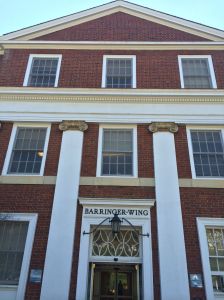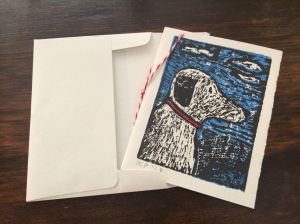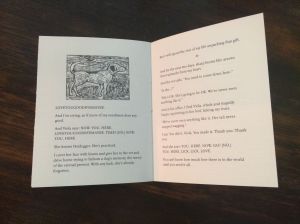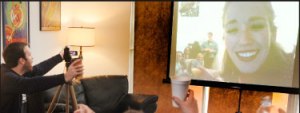Disclaimer: I'm not a doctor, but a survivor collecting information as carefully as I can. Please consult your physician when making decisions about your health.
“It is crucial to tell the story of the physical and psychic process of clinical trials, and as a result to become an arbiter of how trials are run.” – noted at the MD Anderson 2013 Survivorship Conference keynote by Siddhartha Mukherjee, author of The Emperor of All Maladies
“Patients who take part in clinical trials also help improve the way cancer will be treated in the future. Even when clinical trials do not lead to effective new treatments, they often answer important questions and help move research forward.” – National Cancer Institute‘s, Treatment Option Overview
Once you’ve recieved your diagnosis, you’ve choices to make. What will you tell family; how will you tell children? Friends? Colleagues? How will you wrestle in the small hours with the worries that have appeared rapidly and grimly. And you must answer, likely urgently, how will you medically treat (or choose not to treat) the disease.
You make a personal and nuanced choice when selecting a medical treatment. I don’t here presume to offer medical advice; instead, I share my experience in a clinical trial, how I got here, why I chose it, and why I believe they can be worth considering as a viable option.
Treatment Landscape

Where the UVA Clinical Research Unit (CRU) resides.
If you catch melanoma early, survival rates are relatively high. In many cases where it is constrained to the skin, it is operable (patches of skin are often removable and can often be helped to heal well). But when caught late, after it has spread (and is therefore classified as either “Stage III” or “Stage IV” depending on details), or when otherwise located in inoperable areas, the survival rates drops very substantially [reference]. This is partly because the common, recommended treatments (“standard of care“) we currently use are not very effective (for general reference, see the National Cancer Institute’s, Treatment Option Overview). For operable “Stage III,” a common post-surgical treatment is called Interferon. Interferon however is notable both for its unpleasant effects (mild to severe flu symptoms for the duration of treatment, often lasting two years or more), and for its lack of effectiveness (only a 10% improvement of odds of recurrence, which vary according to details about the primary, but in my case would have meant only a 3.5% chance improvement) [reference, reference]. With more advanced, complicated, or inoperable Stage IIIs there are other treatments, which mostly have worse side effects and less success. So, from a numbers perspective, once this disease starts to spread, that slope swiftly slips and our currently approved treatments do not offer substantial traction.
This landscape helps explain why odds of survival, which are comparatively attractive in Stages I and II, swings so poorly for those of us at more advanced stages. Crucially, it also explains why research in the shape of clinical trials is so important for the future of survival rates, and also why it is an attractive choice for treatment when compared to other cancers (if the standard treatment has a good chance of helping, why risk the unknown treatment?).
The Viability of Clinical Trials
After researching and consulting my doctors at MD Anderson (Dr.s Hwu and Ross), it became clear that a clinical trial would not only help further future treatment for myself and others, it would also be a sober, smart choice based on the relative risks and successes of the available treatments.
The head of my medical team Dr. Hwu, and my surgeon Dr. Ross, are world-leading researchers. Dr. Hwu specializes in immunology. When I let him know I was open to clinical trials, he helped me locate an open trial for which I was qualified and which had a seat opening soon at the University of Virginia (Charlottesville, VA) under his colleague Dr. Slingluff, the MEL58 trial. While there is/was a similar trial being run at MD Anderson, it had no open seats and there was no reliable ETA on when it would (such are the vagaries of running trials; it’s often all an experiment).
Getting Enrolled
Getting enrolled was no easy matter. Sheaves of documents had to be read and signed by my wife and I, medical documents from 3 different institutions had to be aggressively wrangled by me and delivered to the folks at UVA via countless phone calls and email messages to ensure that everything was in order and on time. I barely got in. Had I not had the essential support from MDA, and had I not had emotional and other support from friends and family it never would have happened.
On Trial
Then began 6 months of clinical trial, during which time I had 14 appointments at UVA to see Dr. Slingluff’s research team. Several of my trips to Virginia were for multiple weeks and included multiple appointments in order to cut down on the expense and interruption of constant flights. This of course is only possible if one can find affordable lodging nearby. During most stays in central Virginia, I was fortunate to lodge with a dear friend who lives in Staunton, a 1-hour drive from Charlottesville. I did however spend a couple nights with another friend who lives in Charlottesville, and crucially, I spent one night in the UVA Health System Hospitality House, which functions like a hostel for folks admitted to the hospital. It is bare-bones, tight quarters, with no luxury, but it is a safe and inexpensive place to sleep and the folks who run it are clearly engaged in a tight-strapped labor of love. We can all be glad that places like this exist, and if you are considering a clinical trial, look to see if a similar such place can serve your needs, and be sure to be nice to the staff who are clearly in it for love and not money.
The treatment portion of the trial was a number of injections (never more than weekly, and often with several week gaps between). These injections, which included “peptides” (whose function was to train my immune system to recognize melanoma as a target) and “adjuvants” (whose function was to turn my immune system on to overdrive). The injections themselves were very painful (a strong burning sensation during the several-stick injection as well as a minute or so after). Though side-effects vary, mine were about 24 hours of flu-like symptoms. These symptoms dissipated more quickly if I exercised moderately during that period.
In order to measure impact and effects (my layperson’s interpretation), the trial also included very many blood draws, regular symptom interviews (and a vetted keeping of a symptom diary), a biopsy to remove the skin surrounding the initial injection site (just like getting a mole removed), as well as a lucid lymph node biopsy removing the sentinel lymph node for the initial injection site. This last one was a doozy. Being awake while you are cut that deeply, and then asked “want to see it” in reference to your freshly removed lymph node was both a disturbing and also irresistible offer.
The treatment period lasted about 3 months, and then after another 3 months I returned for a final interview and blood draw. Now, with those trips completed, I will field a phone call annually and ensure that my scan results get sent to them. In a sense, I now become a binary piece of data in their findings: has the cancer recurred or not.
Financial Implications
It is generally true of clinical trials that the trial covers all medical care and treatment other than “standard of care” elements such as the normally scheduled CT/PET Scans, X-Rays, etc. In most cases, travel and lodging are not covered, though for some institutions and studies, this too can be covered.
Verdict
As I was at the beginning of the trial (Stage IIIa re-sected with no evidence of disease), I remain NED. If I never have recurrence, I will never know if the clinical trial was the reason, and if it does recur, I will never know if the trial’s treatment delayed that recurrence. For now, it is enough for me that that I am NED and that I have tried my level best by pursuing the treatment I believe gives me the best chance.
I am extremely grateful for the chance I had to do this clinical trial. While the side effects were at times very painful, and while the inconvenience of frequent travel was sometimes burdensome (despite having the good fortune of friends near the research location), by comparison these burdens were trivial compared to the typical side-effects of pegylated interferon, which was the standard of care for my stage and condition. And while there is no guarantee that my clinical trial treatment will have had an effect, it would be difficult for it to be any worse than the odds of that standard treatment. And while I did not choose the clinical trial primarily because it may help others, I did get to contribute to the forward progress of medical science while making a rational choice about my own treatment, and my own odds of survival.





